Antigua is described by many as THE place to experience Semana Santa (Holy Week) in Central America. So we were happy to discover we could make it there in time for the festivities.
The history of Semana Santa dates back to 16th century Spain, when the Catholic Church decided to educate the masses about the story of Jesus’ crucifixion and resurrection.
In Antigua, things get started on Palm Sunday with the first processions. In preparation, residents and business owners cover the streets of the city with alfombras (carpets). The alfombras are usually made of a base of sand or sawdust (used to level out the carpet on the uneven cobblestone street) and then are built in intricate patterns using stencils, coloured sawdust, flowers, pine needles, grass, plants, fruits, vegetables, and breads.
A sawdust alfombra
An alfombra created out of fruits, vegetables, and bread in La Merced church for the vigil
The processions themselves are all very similar, with the following parts: First, men dressed as Roman soldiers lead the way, followed by hundreds of men in purple robes.
Roman soldiers
A sea of purple
After the Roman soldiers, there are flag bearers and incense carriers.
Incense bearer
Next, an anda (or float) is carried on the shoulders of between 60 and 100 men (again, in purple robes). These andas weigh up to 7000 pounds, so there are lots of men, sorted by shoulder height, in the wings ready to switch off. The first float features Jesus and the cross.
On Good Friday, the purple robes are changed to black mourning robes.
Behind the first anda is a marching band, playing funeral songs. Then, more incense, and the women’s float – a smaller float featuring the Virgin de Delores who represents the Virgin Mary. The women are dressed in white dresses/skirts and veils (again, changing to black mourning clothes on Good Friday).
Women’s float
Another band follows, and then the cleanup crew to sweep up what remains of the destroyed alfombras.
The carpets, which are often finished minutes before the procession are quickly destroyed
The processions happen on Palm Sunday, and then Wednesday to Sunday of Easter weekend. They are slow and long… many start before sunrise and go throughout the day. Others go throughout the night.
Procession going into the night
Nighttime carpet
Most processions seem to last about 12 hours or so, and they start at various churches throughout the city.
La Merced church
Thinking about checking it out? There’s a few things you should know. First, accommodation fills up during Semana Santa, so book yours well in advance. Expect to pay approximately double the regular rates. Second, the petty criminals also know that Antigua is the place to be, so they’re here too. Don’t carry anything valuable and be extra vigilent about your stuff. We had a wallet with about $15 in it pickpocketed during a Good Friday procession. Another girl at our hostel had her bag slashed and wallet stolen the same day. And another girl we met was robbed at gunpoint while walking a couple of blocks after dark.
Children’s procession
Roman soldier
No one is too young to participate!
Note: If you liked these photos, there are oodles more in our Antigua gallery. Check them out!
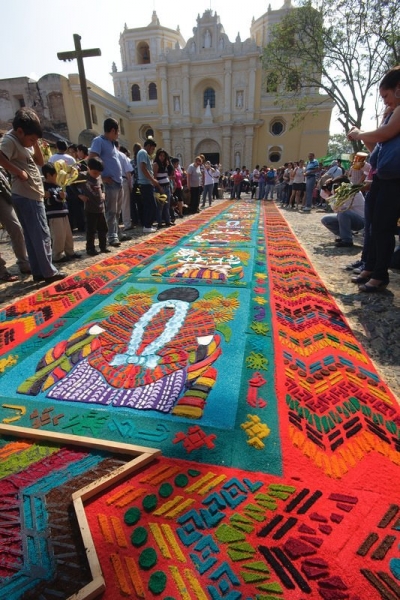
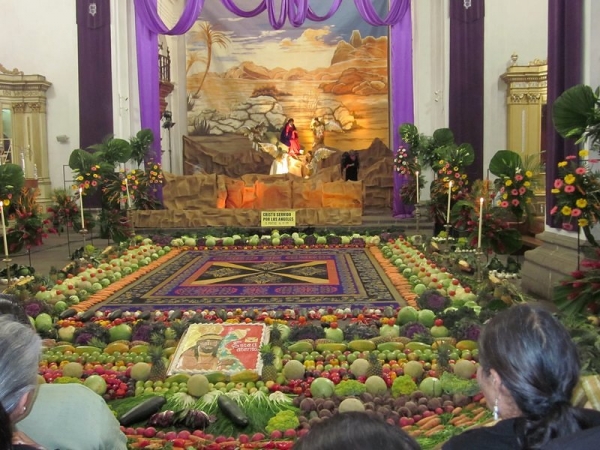
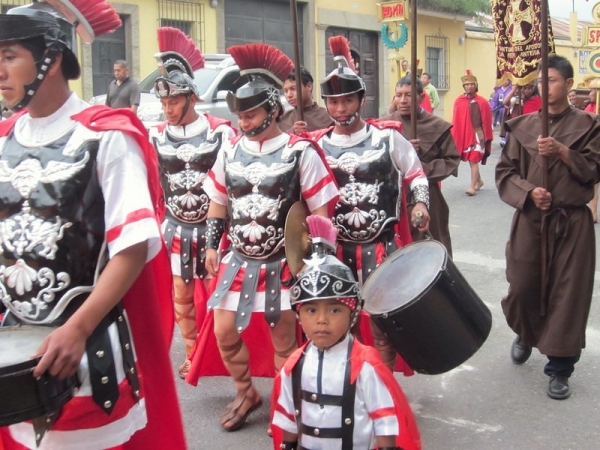
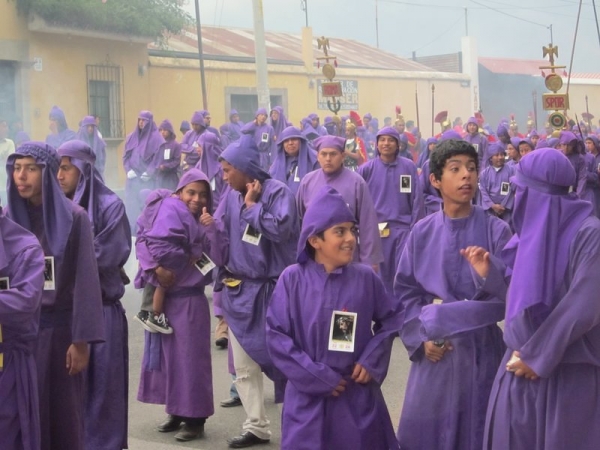
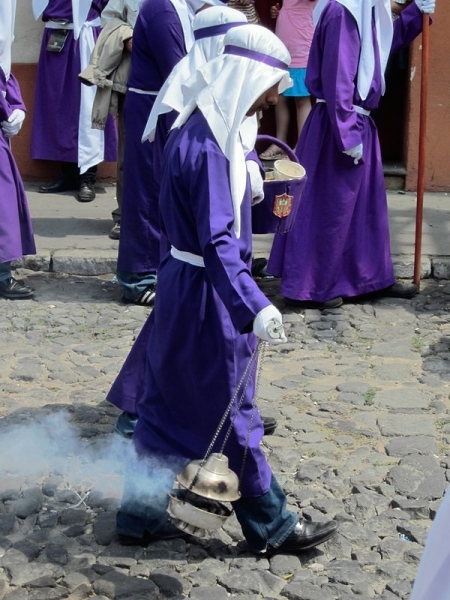
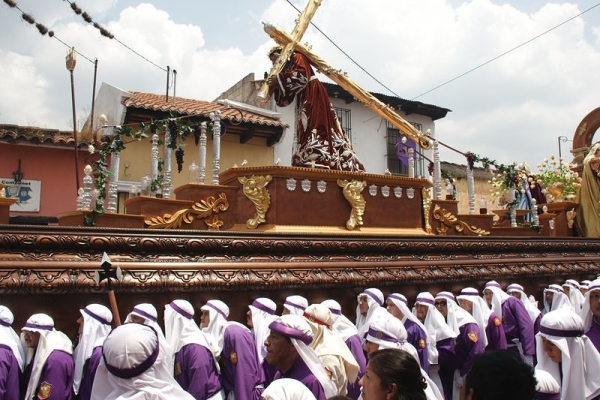
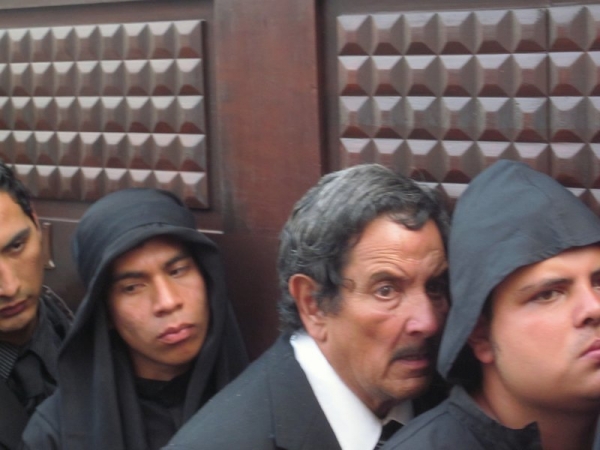
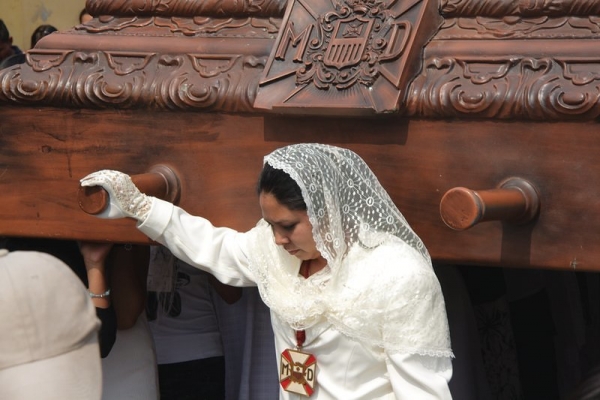
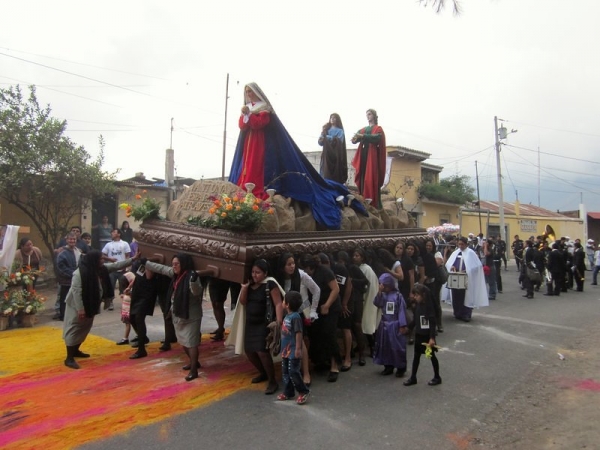
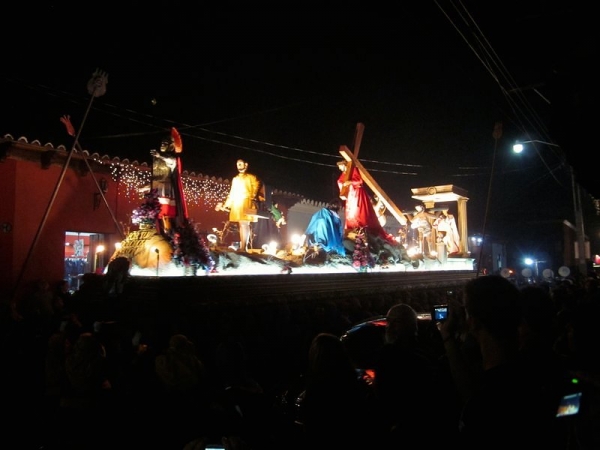
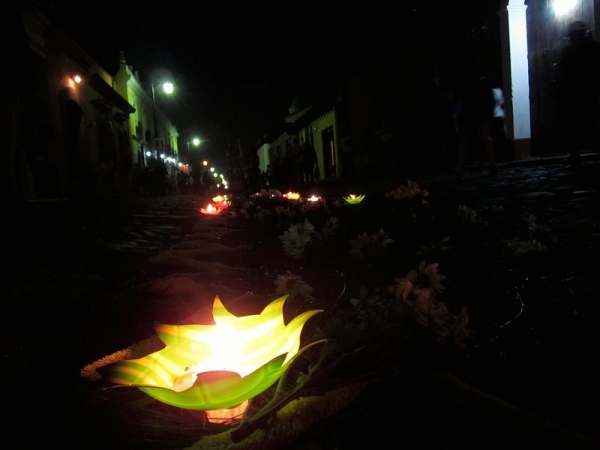
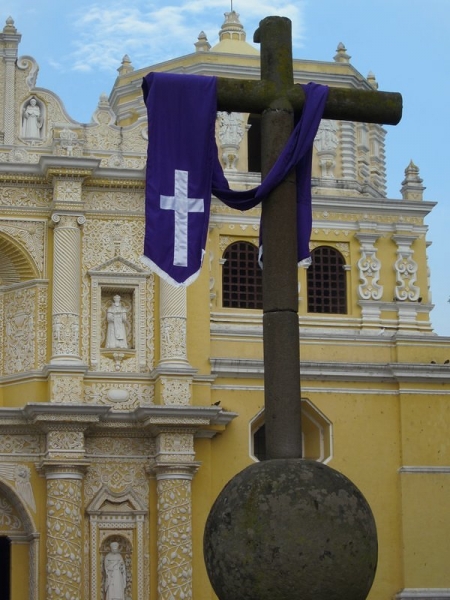
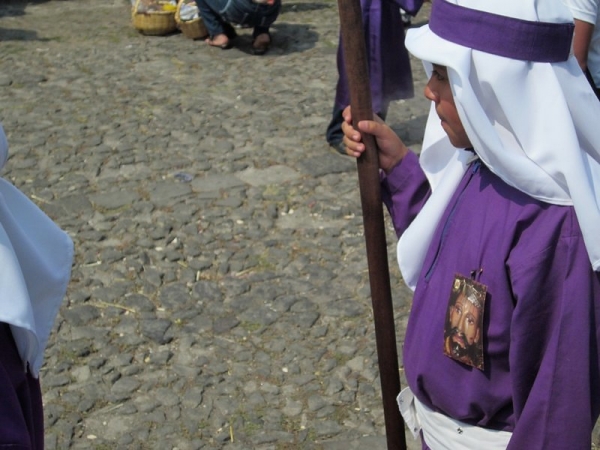
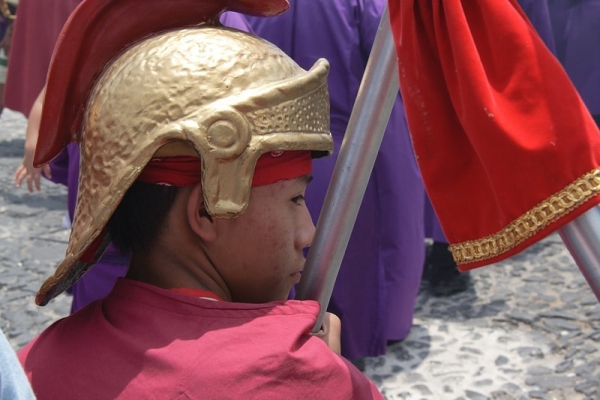
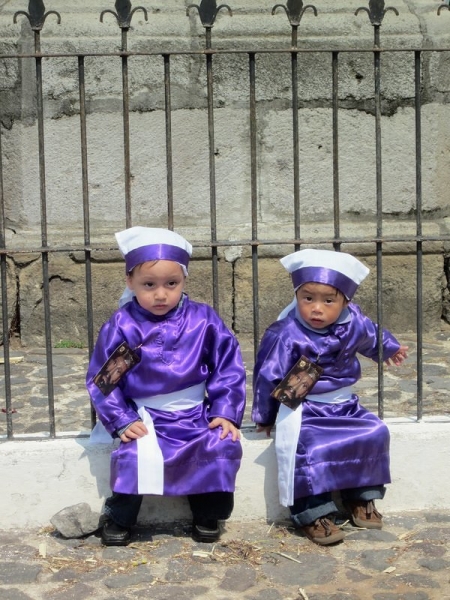
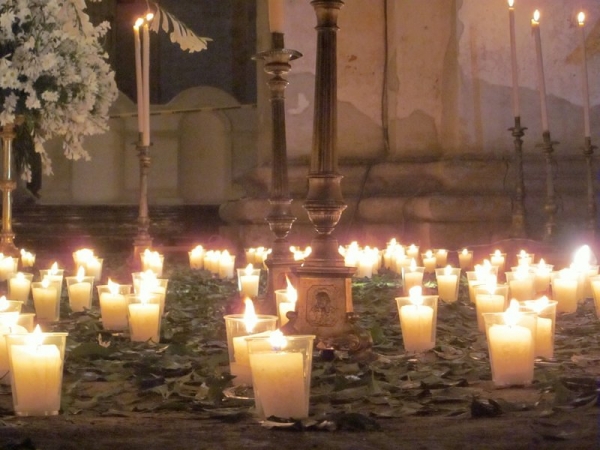
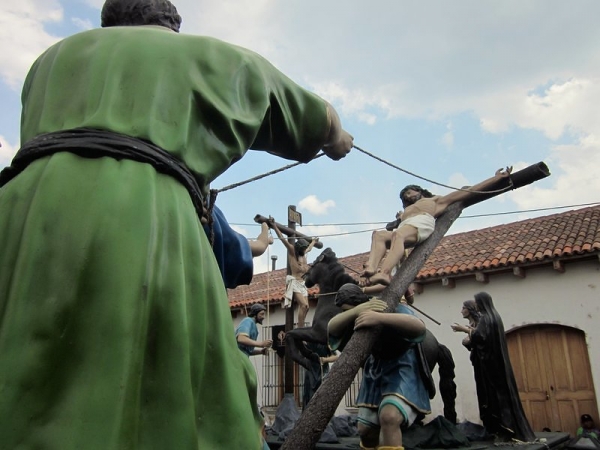
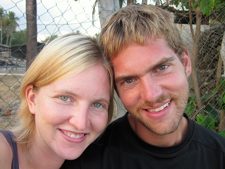




Lovely photos! We spent Semana Santa 2012 in Antigua, it was memorable.
Sounds like there’s a story in that comment. We definitely have fond of Semana Santa and our last few days in Central America. I was really surprised by the quality of the free breakfast burrito our hostel gave us, and only a little upset by the pickpockets. To this day I still refuse to carry a wallet.
Were you there this past year — the same time as us? (2012?)
Exactly then, yes.
Crazy! Where are you now?
Luxor, Egypt. And you? Our felucca just landed. Happy New Years by the way.
Very cool! We’re in Panajachel, Guatemala 🙂